Home>Articles>Why Is My Ice Maker Leaking Water Into The Fridge
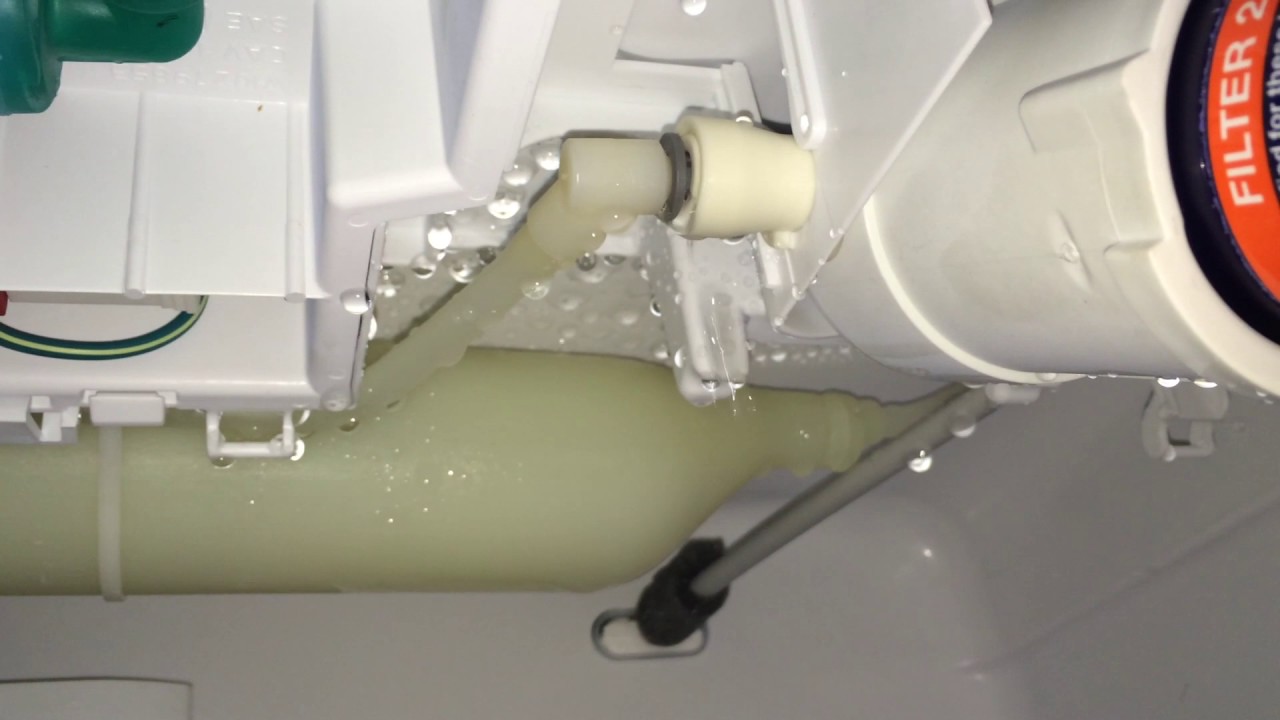

Articles
Why Is My Ice Maker Leaking Water Into The Fridge
Modified: February 28, 2024
Discover why your ice maker is leaking water into the fridge with our informative articles. Find solutions and troubleshooting tips to fix the issue.
(Many of the links in this article redirect to a specific reviewed product. Your purchase of these products through affiliate links helps to generate commission for Storables.com, at no extra cost. Learn more)
Introduction
Having an ice maker in your fridge is a convenient way to always have ice cubes readily available for your beverages. However, it can become quite frustrating if you start noticing water leaking into your fridge from the ice maker. Not only does it create a mess, but it can also lead to potential damage to your refrigerator and surrounding areas.
In this article, we will explore the common causes of ice maker leaks and provide you with troubleshooting steps to help resolve the issue. Whether you have a water supply line problem, a faulty water inlet valve, a frozen water line, or an improperly installed ice maker, we’ve got you covered with solutions to fix the leaks and ensure your ice maker functions properly.
So, let’s dive in and discover the reasons behind ice maker leaks and how you can resolve them.
Key Takeaways:
- Troubleshoot and fix ice maker leaks by inspecting the water supply line, water inlet valve, and ice maker assembly. Regular maintenance and proper alignment can prevent leaks and ensure a steady ice supply.
- Prevent leaks from the ice storage bin or tray by regular inspection, proper installation, and maintenance. Avoid overfilling and ensure a tight seal to maintain a functional ice maker.
Common causes of ice maker leaks
When it comes to ice maker leaks, several factors could be contributing to the issue. Understanding the common causes can help you pinpoint the problem and take the necessary steps to fix it. Here are some potential culprits:
- Faulty water supply line: One of the primary causes of ice maker leaks is a damaged or faulty water supply line. Over time, the supply line can get kinked, become brittle, or develop cracks, resulting in water leakage. Regular wear and tear or improper installation can also contribute to this issue. Inspecting the water supply line for any damage or leakage is essential in addressing this problem.
- Damaged or clogged water inlet valve: The water inlet valve is responsible for allowing water to flow into the ice maker. If the valve is damaged or clogged with debris, it can lead to water leakage. A malfunctioning valve may not close fully, causing water to continually flow into the ice maker, even when it is not making ice. Cleaning or replacing the water inlet valve may be necessary to resolve this issue.
- Frozen or blocked water line: Freezing temperatures can cause the water line supplying water to the ice maker to freeze. When this happens, the frozen water can cause pressure to build up and eventually lead to leaks. Additionally, a blocked water line due to mineral deposits or debris can disrupt the flow of water and result in leaks. Thawing the frozen line or clearing any blockages is crucial in addressing this cause.
- Faulty ice maker assembly: The ice maker assembly consists of various components, including the ice mold, fill tube, and water inlet valve. If any of these components are damaged or worn out, it can lead to water leaks. A faulty ice maker assembly may not properly control the water flow, causing it to overflow or leak into the refrigerator. In such cases, replacing the necessary components may be required.
- Improperly installed or misaligned ice maker: If the ice maker is not correctly installed or aligned, it can result in water leaks. A misaligned ice maker may not be able to properly regulate water flow, leading to overflow and leakage. Adjusting and aligning the ice maker according to the manufacturer’s instructions can help resolve this issue.
- Leakage from the ice storage bin or tray: Sometimes, the source of the leak may not be related to the ice maker itself but rather the ice storage bin or tray. Cracks or damage to the bin or tray can allow water to escape and find its way into the refrigerator. Inspecting the bin or tray for any signs of leakage or damage is crucial in addressing this issue.
Faulty water supply line
A faulty water supply line is a common cause of water leaks from the ice maker. Over time, the supply line can develop cracks, become kinked, or suffer from wear and tear, leading to water leakage. Additionally, improper installation or connection can contribute to this issue.
To determine if the water supply line is the culprit, follow these steps:
- Locate the water supply line that connects to the back of your refrigerator. It is usually a flexible plastic tube or a copper line.
- Inspect the entire length of the supply line for any signs of damage, such as cracks, kinks, or tears. Pay close attention to areas where the line comes into contact with sharp edges or bends.
- If you notice any damage, shut off the water supply to the refrigerator by turning the valve clockwise.
- Disconnect the water supply line from the refrigerator by loosening the compression nut or pushing down on the ring and pulling the line out.
- Replace the damaged section of the supply line with a new one. Ensure that you use the correct size and type of line for your refrigerator model.
- Reconnect the new supply line to the refrigerator by securely tightening the compression nut or reinserting the line and ensuring it clicks into place.
- Turn the water supply back on, and check for any leaks from the supply line. If there are no signs of leakage, you have successfully resolved the issue.
If the supply line appears to be undamaged, the issue may lie with the connection. Ensure that the connection between the supply line and the refrigerator is secure and tight. Sometimes, loose connections can result in leaks. If necessary, disconnect the line and reconnect it, making sure it is properly tightened.
By addressing any issues with the water supply line, you can prevent water leakage from occurring and ensure that your ice maker functions properly. However, if the problem persists, it may indicate another underlying issue, and further troubleshooting or professional assistance may be required.
Damaged or clogged water inlet valve
The water inlet valve is a vital component of the ice maker system, responsible for controlling the flow of water into the ice maker. If the valve becomes damaged or clogged with debris, it can result in water leaks.
To determine if the water inlet valve is the cause of the leaks, follow these steps:
- Locate the water inlet valve, typically located at the back of the refrigerator, behind the access panel.
- Inspect the valve for any visible signs of damage, such as cracks or leaks. Additionally, check for any debris or mineral buildup that may be blocking the valve.
- If the valve appears to be damaged or clogged, it will need to be replaced. Consult your refrigerator’s manual or contact the manufacturer for the correct replacement part.
- Before replacing the water inlet valve, you must shut off the water supply to the refrigerator. Locate the shut-off valve, usually under the sink or near the refrigerator, and turn it off.
- Unplug the refrigerator from the power source.
- Disconnect the water supply line from the inlet valve by loosening the compression nut or pushing down on the ring and pulling the line out.
- Remove the screws or clips securing the water inlet valve to the refrigerator and carefully detach it.
- Install the new water inlet valve by aligning it with the mounting holes and securing it with screws or clips.
- Reconnect the water supply line by securely tightening the compression nut or reinserting the line and ensuring it clicks into place.
- Plug the refrigerator back into the power source and turn on the water supply.
- Check for any leaks from the water inlet valve. If there are no signs of leakage, the problem has been resolved.
Regularly cleaning the water inlet valve can help prevent clogs caused by mineral buildup. You can use a soft brush or cloth to gently remove any debris or deposits on the valve. By maintaining a clean and functioning water inlet valve, you can ensure the proper operation of your ice maker and prevent water leaks.
If replacing the water inlet valve does not solve the issue, it may be necessary to seek professional help or contact the manufacturer for further assistance.
Frozen or blocked water line
If you notice water leaking from your ice maker, a frozen or blocked water line could be the culprit. Freezing temperatures can cause the water line supplying water to the ice maker to freeze, leading to increased pressure and eventual leaks. Additionally, mineral deposits or debris can accumulate in the water line, blocking the flow of water and causing leaks.
To troubleshoot and fix a frozen or blocked water line, follow these steps:
- Locate the water line that supplies water to the ice maker. It is typically a plastic or metal tube running from the back of the refrigerator to the ice maker assembly.
- Inspect the water line for any signs of freezing, such as ice buildup or a solid blockage. Check for any kinks or bends in the line that may impede the water flow.
- If the water line is frozen, unplug the refrigerator and leave the door open to allow the line to thaw naturally. This process may take several hours.
- Place towels or a container underneath the ice maker to catch any melting ice or water during the thawing process.
- Once the line has thawed, check for any remaining obstructions or blockages. Use a soft brush or cloth to gently remove any debris or mineral deposits that may be present.
- Turn on the water supply to the refrigerator and check for any leaks from the water line. If there are no signs of leakage, the problem has been resolved.
- If the water line remains frozen or blocked, it may be necessary to use a hairdryer or warm water to expedite the thawing process. However, be cautious not to use excessive heat or force that could damage the water line or other components.
- If the issue persists despite your best efforts, it is advisable to seek professional assistance to avoid causing further damage to the appliance.
Preventing future freezing or blockage of the water line can be achieved by ensuring adequate temperature control in the freezer compartment, regularly cleaning the water line to remove mineral deposits, and avoiding sharp bends or kinks in the line that may impede the water flow.
By addressing any issues with frozen or blocked water lines, you can restore proper water flow to your ice maker and eliminate leaks.
Faulty ice maker assembly
A faulty ice maker assembly can be a common cause of water leaks in your refrigerator. The ice maker assembly consists of various components, including the ice mold, fill tube, and water inlet valve. If any of these components become damaged or worn out, it can lead to water leaks.
To troubleshoot and fix a faulty ice maker assembly, follow these steps:
- Locate the ice maker assembly inside your refrigerator. It is usually found in the freezer compartment.
- Inspect the ice mold, fill tube, and water inlet valve for any visible signs of damage or wear. Look for cracks, leaks, or misaligned parts.
- If you notice any issues with the ice mold, fill tube, or water inlet valve, it may be necessary to replace the faulty component. Consult your refrigerator’s manual or contact the manufacturer for the correct replacement parts.
- Before replacing any components, unplug the refrigerator from the power source for safety.
- Disconnect the water supply line from the water inlet valve by loosening the compression nut or pushing down on the ring and pulling the line out.
- Remove any screws or clips securing the ice maker assembly to the freezer compartment. Carefully detach the assembly.
- Replace the damaged component with the new one, making sure to align it properly and secure it with screws or clips.
- Reconnect the water supply line to the water inlet valve by securely tightening the compression nut or reinserting the line and ensuring it clicks into place.
- Plug the refrigerator back into the power source and allow the ice maker to cycle and produce ice.
- Check for any leaks from the ice maker assembly. If there are no signs of leakage, the problem has been resolved.
Regular maintenance and cleaning of the ice maker assembly can also help prevent future issues. Remove any ice build-up or debris from the ice mold and fill tube, and periodically clean the water inlet valve to remove any mineral deposits.
If the problem persists despite your attempts to fix the ice maker assembly, it may be necessary to seek professional assistance or contact the manufacturer for further guidance.
By addressing any faulty components within the ice maker assembly, you can ensure the proper functioning of your ice maker and eliminate water leaks.
Improperly installed or misaligned ice maker
If your ice maker is improperly installed or misaligned, it can lead to water leaks. A misaligned ice maker may not be able to regulate the water flow properly, resulting in overflow and leakage. Additionally, an incorrect installation can cause water to escape from the ice maker and into the fridge.
To troubleshoot and fix an improperly installed or misaligned ice maker, follow these steps:
- Consult your refrigerator’s manual or the manufacturer’s instructions for proper installation and alignment guidelines.
- Ensure that the ice maker is securely attached to the freezer wall or shelf, depending on the model.
- Check that the ice maker is level. If it is not level, adjust the leveling screws or feet until it is even.
- Ensure that the water supply line is properly connected to the ice maker and that the connection is secure.
- Verify that the water inlet valve is aligned with the fill tube to allow proper water flow.
- If necessary, adjust the position of the ice maker by loosening the mounting screws or clips, moving the ice maker into the desired position, and then tightening the screws or clips again.
- Some ice makers have an adjustment mechanism that allows you to control the water level. Check the manual or manufacturer’s instructions on how to adjust the water level, if applicable.
- Once the ice maker is properly installed and aligned, allow it to cycle and produce ice.
- Check for any leaks from the ice maker. If there are no signs of leakage, the problem has been resolved.
Regularly inspecting and maintaining the alignment of your ice maker can prevent future leaks. Keep an eye on the position and level of the ice maker and make adjustments as needed. If you notice any signs of misalignment or leaks, address them promptly to avoid further issues.
If the problem persists despite your attempts to align the ice maker, it may be necessary to seek professional assistance or contact the manufacturer for further guidance.
By ensuring that your ice maker is properly installed and aligned, you can prevent water leaks and enjoy a reliable supply of ice.
Leakage from the ice storage bin or tray
While the ice maker itself is often the main suspect when it comes to water leaks, sometimes the source of the problem lies within the ice storage bin or tray. Cracks, damage, or improperly positioned components in the bin or tray can cause water to leak into the refrigerator.
To address leakage from the ice storage bin or tray, follow these steps:
- Inspect the ice storage bin or tray for any visible signs of damage or cracks. Check both the interior and exterior surfaces.
- If you notice any cracks or damage, it may be necessary to replace the ice storage bin or tray. Consult your refrigerator’s manual or contact the manufacturer for the correct replacement parts.
- Before replacing the bin or tray, empty it of any ice and remove it from the refrigerator.
- Clean the area around the ice storage bin to ensure there are no obstructions or debris.
- Install the new ice storage bin or tray, making sure it is properly positioned and securely in place.
- If the bin or tray is adjustable, ensure that it sits level and flush with the ice maker assembly.
- Allow the ice maker to cycle and produce ice.
- Check for any leaks from the ice storage bin or tray. If there are no signs of leakage, the problem has been resolved.
Regularly inspecting the ice storage bin or tray for any signs of cracks or damage can help prevent leaks. Additionally, cleaning and maintaining the area around the bin can ensure proper water drainage and prevent water accumulation that can lead to leaks.
If the problem persists despite replacing the bin or tray, it may be necessary to seek professional assistance or contact the manufacturer for further guidance.
By addressing any issues with the ice storage bin or tray, you can eliminate water leaks and maintain a clean and functioning ice maker.
Check the water supply line for any leaks or blockages. Also, make sure the ice maker is level and the water inlet valve is functioning properly.
How to troubleshoot and fix ice maker leaks
Experiencing leaks from your ice maker can be frustrating, but with some troubleshooting and simple fixes, you can resolve the issue and prevent further leakage. Here are steps to help troubleshoot and fix ice maker leaks:
- Identify the source: Before attempting any fixes, determine the source of the leak. Start by inspecting the surrounding area for signs of water accumulation and trace it back to the ice maker components.
- Check the water supply line: Examine the water supply line connected to the ice maker. Look for cracks, kinks, or loose connections. If you find any issues, replace the damaged section or tighten the connections as necessary.
- Inspect the water inlet valve: The water inlet valve controls the water flow to the ice maker. Check for any visible signs of damage, such as cracks or leaks. If the valve is faulty, it may need to be replaced to eliminate leaks.
- Thaw a frozen water line: If the water line is frozen, unplug the refrigerator and leave the freezer door open to allow it to thaw naturally. Once thawed, check for any remaining obstructions or debris in the line.
- Examine the ice maker assembly: Inspect the ice maker assembly, including the ice mold, fill tube, and water inlet valve. Look for signs of damage or misalignment. Replace any damaged components or adjust the alignment if necessary.
- Ensure proper installation: Verify that the ice maker is correctly installed and level. If it is misaligned, adjust the positioning and tighten any loose screws or clips.
- Check the ice storage bin or tray: Inspect the ice storage bin or tray for cracks or damage. Replace it if necessary, ensuring it is properly positioned and level.
- Perform regular maintenance: Clean the ice maker components, including the ice mold and water inlet valve, to remove any debris or mineral deposits that can cause blockages and leaks. Regular cleaning can help prevent future issues.
- Test for leaks: After making any fixes or adjustments, run the ice maker and monitor for any signs of leakage. Double-check all connections and ensure there are no leaks from the repaired components.
- Seek professional assistance if needed: If you have attempted troubleshooting steps but the leaks persist, or if you are unsure about making repairs yourself, it is advisable to contact a professional technician. They can provide further guidance and resolve any underlying issues.
By following these troubleshooting steps and addressing the specific causes of ice maker leaks, you can resolve the problem and have a fully functional ice maker once again.
Read more: Why Is My Ice Maker Not Getting Water
Steps to check the water supply line
Checking the water supply line is an important step in troubleshooting ice maker leaks. Here are the steps to effectively check the water supply line:
- Locate the water supply line: The water supply line is typically located at the back of the refrigerator, connecting to the ice maker. It is commonly a flexible plastic or copper tube.
- Inspect the supply line: Carefully examine the entire length of the water supply line for any signs of damage, such as cracks, kinks, or wear and tear. Pay close attention to areas where the line comes into contact with sharp edges or bends.
- Detect leaks or loose connections: Look for any signs of water leakage, including small drips or wet spots along the supply line. Also, check for any loose connections between the supply line and the ice maker.
- Shut off the water supply: Before making any repairs or adjustments, it is crucial to turn off the water supply to the refrigerator. Locate the shut-off valve, usually found under the sink or near the refrigerator, and turn it clockwise to close.
- Disconnect the water supply line: To inspect the supply line more closely, disconnect it from the ice maker. Depending on the connector type, you may need to loosen a compression nut or push down on a ring and pull the line out.
- Check for obstructions: Inspect the open end of the water supply line. Look for any debris, mineral deposits, or ice that may be blocking the flow of water. Clear any obstructions using a soft brush or cloth.
- Replace a damaged supply line: If you notice any cracks, kinks, or other signs of damage, it is necessary to replace the damaged section of the supply line. Measure the length of the damaged section and purchase a new line that matches the specifications.
- Reconnect the water supply line: Once you have replaced the damaged section or cleared any obstructions, reconnect the water supply line to the ice maker. Ensure a secure and tight connection by tightening the compression nut or reinserting the line and ensuring it clicks into place.
- Turn on the water supply: Finally, turn on the water supply by reopening the shut-off valve. Check for any leakage from the reconnected supply line and verify that the water flows smoothly to the ice maker.
- Monitor for leaks: After completing the inspection and reconnection, observe the water supply line for any signs of leakage. Watch for dripping or wet spots along the line and near the ice maker. If there are no leaks, you have successfully checked and addressed any issues with the water supply line.
By following these steps to check the water supply line, you can ensure proper water flow to the ice maker and eliminate any leaks caused by damaged or blocked supply lines.
Steps to inspect and replace the water inlet valve
The water inlet valve is a crucial component of the ice maker system, responsible for controlling the flow of water. If you suspect that a faulty water inlet valve is causing leaks in your ice maker, follow these steps to inspect and replace the valve if necessary:
- Unplug the refrigerator: To ensure safety, unplug the refrigerator from the power source before starting any inspections or repairs.
- Locate the water inlet valve: The water inlet valve is typically situated at the back of the refrigerator, behind the access panel. Identify the component for inspection.
- Inspect the water inlet valve: Carefully examine the valve for any visible signs of damage, such as cracks, leaks, or corrosion. Pay attention to the connections and valves within the assembly.
- Check for clogs or blockages: In addition to physical damage, mineral deposits or debris can clog the water inlet valve, causing leaks. Look for any blockages that may obstruct the flow of water.
- Determine the need for replacement: If you notice significant damage, leaks, or clogs that cannot be cleared, the water inlet valve may need to be replaced. Consult your refrigerator’s manual or contact the manufacturer for the correct replacement part.
- Disconnect the water supply line: Before replacing the water inlet valve, shut off the water supply to the refrigerator. Locate the shut-off valve and turn it clockwise to close. Then, disconnect the water supply line from the valve.
- Remove the old water inlet valve: Remove any screws or clips securing the water inlet valve to the refrigerator. Carefully detach the valve and disconnect any wires or connections, taking note of their positions for future reference.
- Install the new water inlet valve: Position the new water inlet valve in the correct orientation and align it with the mounting holes. Securely attach the valve with the appropriate screws or clips.
- Connect the water supply line: Reconnect the water supply line to the new water inlet valve. Ensure a tight and secure connection by tightening the compression nut or reinserting the line and ensuring it clicks into place.
- Reconnect the wires and connections: Attach any wires or connections that were disconnected from the old valve to the corresponding terminals on the new valve. Follow the notes you made during the disconnection.
- Turn on the water supply: Once the new water inlet valve is in place and all connections are secure, turn on the water supply by reopening the shut-off valve.
- Plug in the refrigerator: Finally, plug the refrigerator back into the power source to resume its operations.
- Test for leaks: Run the ice maker and monitor for any signs of leakage. Check the connections and the area around the water inlet valve for any water accumulation. If there are no leaks, the replacement process is complete.
By following these steps, you can inspect and replace a faulty water inlet valve, resolving potential leaks and ensuring the proper flow of water to your ice maker.
Steps to thaw a frozen water line
A frozen water line can cause water leaks in your ice maker. If you suspect that a frozen water line is the culprit behind the leaks, follow these steps to effectively thaw the line:
- Unplug the refrigerator: For safety purposes, unplug the refrigerator from the power source before you begin.
- Locate the water line: Identify the water line that supplies water to your ice maker. It is typically a plastic or metal tube running from the back of the refrigerator to the ice maker assembly.
- Inspect the water line: Check the entire length of the water line for signs of freezing, such as ice buildup or a solid blockage. Verify that the line is not kinked or bent, obstructing the water flow.
- Thaw the water line naturally: If the line is frozen, leave the refrigerator door open. This will allow the warm air from the room to circulate inside the freezer and gradually thaw the water line. Be patient, as this process might take several hours.
- Place towels or a container: To collect any melting ice or water, place towels or a container under the ice maker assembly.
- Clear any remaining obstructions: Once the water line has thawed, check for any remaining obstructions or blockages. Use a soft brush or cloth to gently remove any ice or debris that may have accumulated.
- Turn on the water supply: Before plugging the refrigerator back in, ensure that the water supply to the refrigerator is turned on. Locate the shut-off valve, usually under the sink or near the refrigerator, and turn it counterclockwise to open it fully.
- Plug in the refrigerator: Once the water supply is turned on, plug the refrigerator back into the power source.
- Allow the ice maker to cycle: Let the ice maker cycle and produce ice. Monitor the system for any signs of leakage during this process.
- Check for leaks: After the water line has thawed and the ice maker has cycled, check for any signs of leakage. Examine the connections and the area around the water line and ice maker assembly for any water accumulation. If there are no leaks, the process is complete.
Remember that preventing future freezing of the water line is important. Ensure proper temperature control in the freezer compartment, and avoid sharp bends and kinks in the water line. Regularly cleaning the water line can also help prevent mineral deposits or debris from causing blockages.
By following these steps to thaw a frozen water line, you can restore the proper water flow in your ice maker and eliminate leaks.
Steps to fix or replace the ice maker assembly
If you have determined that the ice maker assembly itself is the cause of the leaks, follow these steps to fix or replace the assembly:
- Unplug the refrigerator: Before making any repairs or replacements, unplug the refrigerator from the power source for safety purposes.
- Locate the ice maker assembly: The ice maker assembly is typically located in the freezer compartment of the refrigerator. Identify the assembly for repair or replacement.
- Inspect the components: Carefully examine the various components of the ice maker assembly, including the ice mold, fill tube, and water inlet valve. Look for any signs of damage, such as cracks, leaks, or misalignment.
- Replace damaged components: If you identify any damaged components, it may be necessary to replace them. Consult your refrigerator’s manual or contact the manufacturer for the correct replacement parts.
- Disconnect the water supply line: Before replacing the ice maker assembly, shut off the water supply to the refrigerator. Locate the shut-off valve and turn it clockwise to close. Then, disconnect the water supply line from the ice maker assembly.
- Remove the old ice maker assembly: Depending on your specific model, you may need to remove screws or clips securing the ice maker assembly in place. Carefully detach the assembly, taking note of any wires or connections that need to be disconnected.
- Install the new ice maker assembly: Position the new ice maker assembly in the proper orientation and align it with any mounting holes. Securely attach it using the appropriate screws or clips.
- Reconnect the water supply line: Reconnect the water supply line to the new ice maker assembly. Ensure a tight and secure connection by tightening the compression nut or reinserting the line and ensuring it clicks into place.
- Reconnect any wires and connections: Attach any wires or connections that were disconnected from the old ice maker assembly to the corresponding terminals on the new assembly. Refer to your notes or the manufacturer’s guidelines for proper reconnection.
- Plug in the refrigerator: Once the new ice maker assembly is in place and all connections are secure, plug the refrigerator back into the power source.
- Test for leaks: Run the ice maker and monitor for any signs of leakage. Check all connections and the area around the ice maker assembly for any water accumulation. If there are no leaks, the repair or replacement process is complete.
Regular maintenance of the ice maker assembly, such as cleaning the ice mold and water inlet valve, can help prevent future leaks. If the problem persists despite your attempts to fix or replace the ice maker assembly, it may be necessary to seek professional assistance or contact the manufacturer for further guidance.
By following these steps, you can address issues with the ice maker assembly, ensure proper functioning, and eliminate any leaks.
Steps to adjust and align the ice maker properly
If you suspect that an improper alignment of the ice maker is causing leaks, follow these steps to adjust and align it correctly:
- Refer to the refrigerator manual: Consult the user manual specific to your refrigerator model to understand the recommended alignment guidelines, as they may vary.
- Locate the ice maker: Find the ice maker unit in your freezer compartment. It is typically positioned on the side or at the top of the freezer.
- Check the installation: Ensure that the ice maker is securely attached to the freezer wall or shelf. Examine the mounting screws or brackets to see if they are tight and properly fastened.
- Level the ice maker: Using a level tool, check if the ice maker is level horizontally and vertically. Adjust the leveling screws or feet, usually located underneath the ice maker, to achieve proper alignment.
- Verify the alignment with the fill tube: Inspect the alignment of the water fill tube, which delivers water to the ice maker. Ensure that it is properly positioned and securely connected. Make adjustments if necessary.
- Tighten loose screws or brackets: If you find any loose screws or brackets during the alignment process, tighten them securely to prevent shifting or movement of the ice maker.
- Test the ice maker: Once you have adjusted and aligned the ice maker, close the freezer door and allow the ice maker to cycle through its operation. Monitor for any signs of leakage during this process.
- Check for leaks: After the ice maker has cycled and produced ice, observe the area around the ice maker, especially the connections and water lines, for any signs of leakage. If there are no leaks, the adjustment and alignment process is complete.
Regularly checking and adjusting the ice maker alignment can help prevent leaks and ensure optimal performance. If the problem persists despite your attempts to align the ice maker, it may be necessary to seek professional assistance or contact the manufacturer for further guidance.
By following these steps, you can properly adjust and align your ice maker, reducing the risk of leaks and ensuring a smoothly functioning ice making system.
Steps to prevent leaks from the ice storage bin or tray
To prevent leaks from the ice storage bin or tray and maintain a properly functioning ice maker, follow these steps:
- Regular inspection: Periodically inspect the ice storage bin or tray for any signs of cracks, damage, or misalignment. Regular visual checks can help identify potential issues before they escalate into leaks.
- Replace damaged components: If you notice any cracks or damage in the ice storage bin or tray, it is important to replace them promptly. Consult your refrigerator’s manual or contact the manufacturer for the correct replacement parts.
- Ensure proper installation: When installing a new ice storage bin or tray, make sure it is properly positioned and securely in place. Follow the manufacturer’s guidelines for installation instructions to ensure a proper fit.
- Level the ice storage bin or tray: Use a level tool to ensure that the ice storage bin or tray is level. Adjust the leveling screws or feet, if applicable, to achieve an even and balanced position. This will help prevent any water from pooling or leaking out.
- Properly align the bin or tray: Align the ice storage bin or tray with the ice maker assembly to ensure a proper connection. Ensure that it is aligned so that ice can easily flow into the bin or tray without obstruction or misdirection.
- Empty and clean regularly: Regularly empty and clean the ice storage bin or tray to prevent any buildup of ice or debris. Remove any accumulated ice, clean the bin or tray with mild soap and water, and thoroughly dry it before returning it to the freezer.
- Avoid overfilling: Do not overfill the ice storage bin or tray with ice. Leaving some room for the ice to expand can help prevent excess pressure and minimize the risk of leaks.
- Close the ice maker door properly: Ensure that the ice maker door or lid is properly closed after retrieving ice. This will help maintain a consistent temperature inside the bin or tray and prevent any potential leaks.
- Regular maintenance: Perform regular maintenance on your ice maker, including cleaning the ice maker components and checking for any blockages. This will help ensure the optimal performance of the entire ice maker system.
By following these steps to prevent leaks from the ice storage bin or tray, you can maintain a clean and functional ice maker, reducing the risk of water leakage and ensuring a constant supply of ice.
Conclusion
Dealing with leaks from your ice maker can be a frustrating experience, but by identifying the common causes and following the troubleshooting steps outlined in this article, you can effectively address and resolve the issue. Whether it’s a faulty water supply line, a damaged water inlet valve, a frozen water line, a faulty ice maker assembly, or improper alignment, taking the appropriate actions can help prevent further leaks and ensure your ice maker functions properly.
Always begin by inspecting the different components of your ice maker, such as the water supply line, the water inlet valve, the ice storage bin or tray, and the ice maker assembly itself. Look for any signs of damage, wear and tear, or misalignment. From there, you can determine the specific course of action needed, whether it’s replacing a damaged component, thawing a frozen water line, adjusting the alignment of the ice maker, or ensuring proper installation and maintenance.
Regular maintenance and cleaning of your ice maker can also go a long way in preventing leaks. Clear any blockages, remove mineral deposits, and clean the ice storage bin or tray regularly to keep the system running smoothly.
Remember, if troubleshooting and the recommended fixes do not resolve the issue, it may be best to seek professional assistance or contact the manufacturer for further guidance. They can provide expert advice and ensure that your ice maker is functioning optimally.
By following these steps and taking proactive measures, you can enjoy the convenience of an efficient and leak-free ice maker, ensuring that you always have a steady supply of ice for your beverages and reducing the chances of water damage to your refrigerator and surrounding areas.
Frequently Asked Questions about Why Is My Ice Maker Leaking Water Into The Fridge
Was this page helpful?
At Storables.com, we guarantee accurate and reliable information. Our content, validated by Expert Board Contributors, is crafted following stringent Editorial Policies. We're committed to providing you with well-researched, expert-backed insights for all your informational needs.
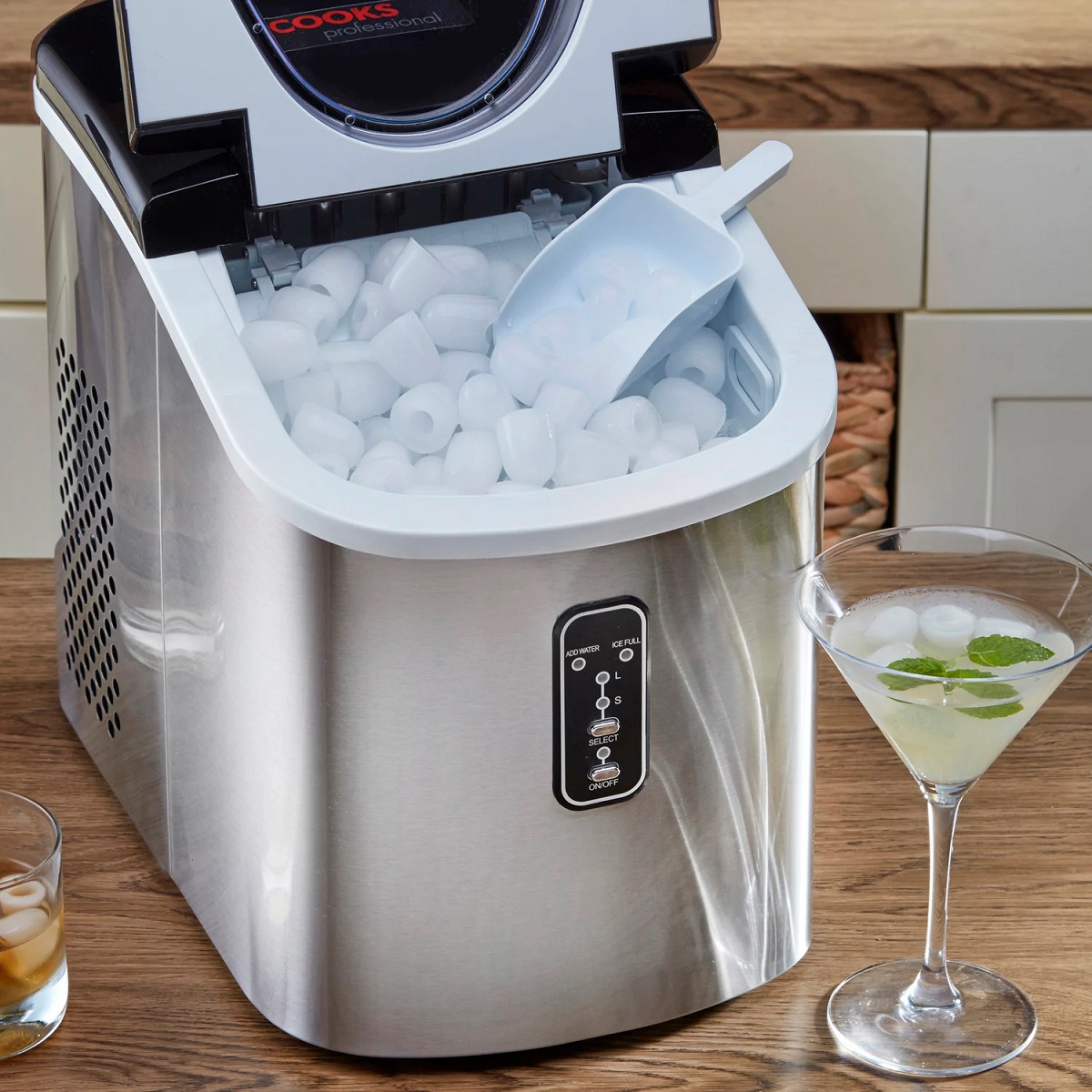
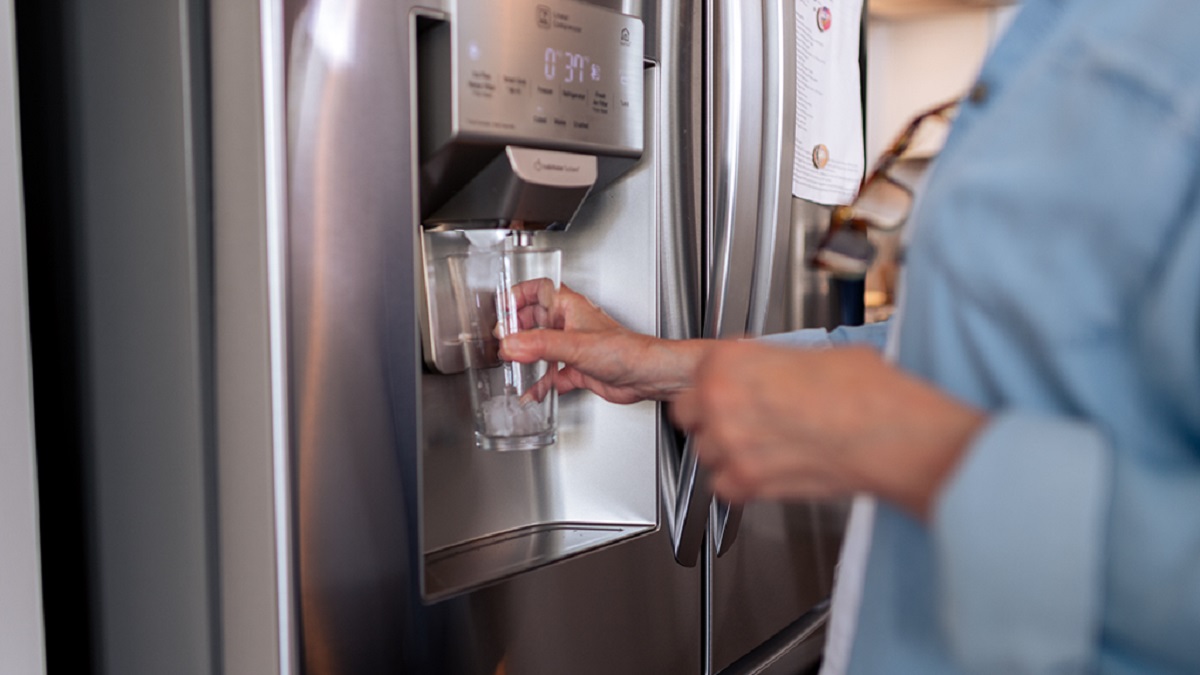
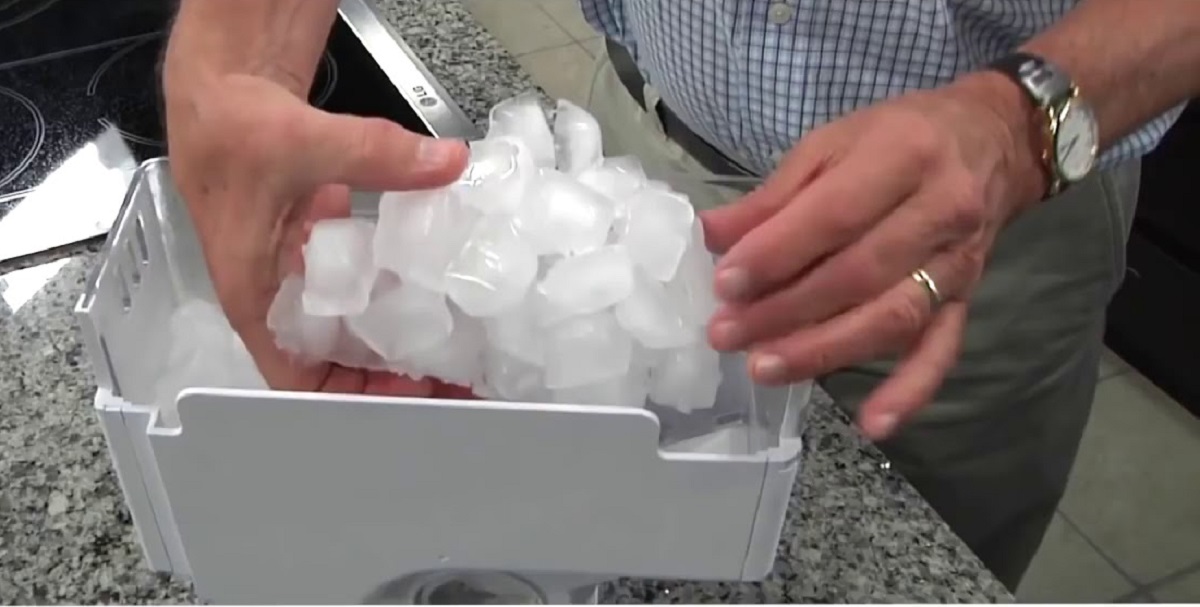
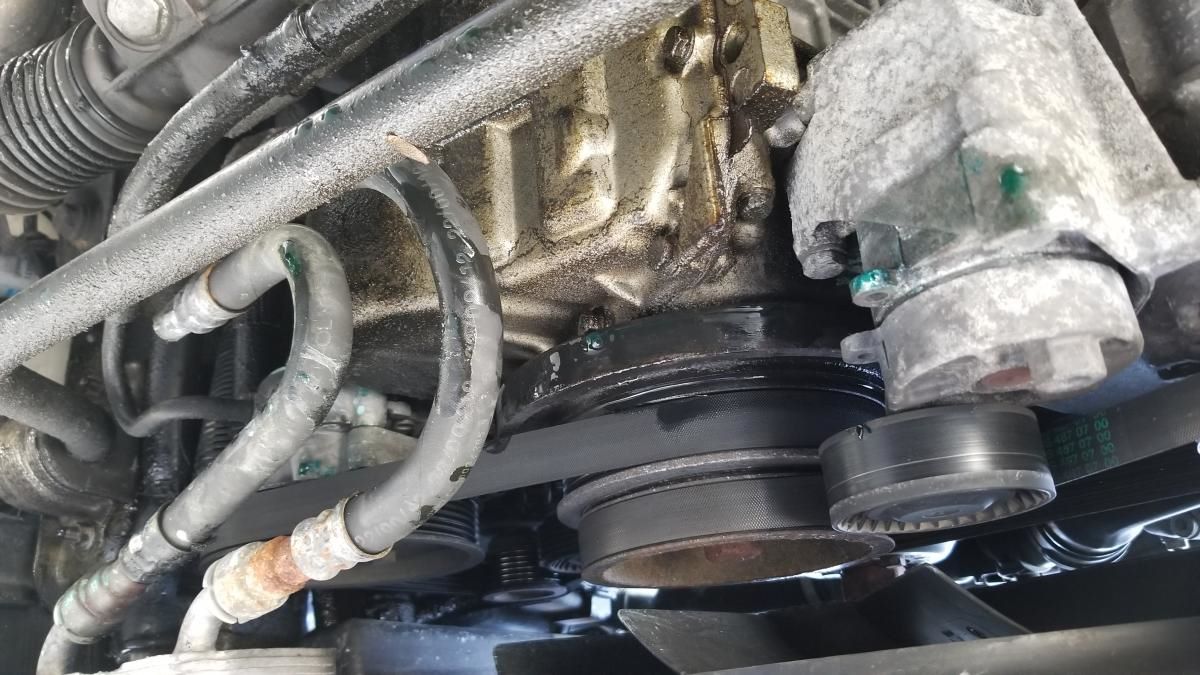
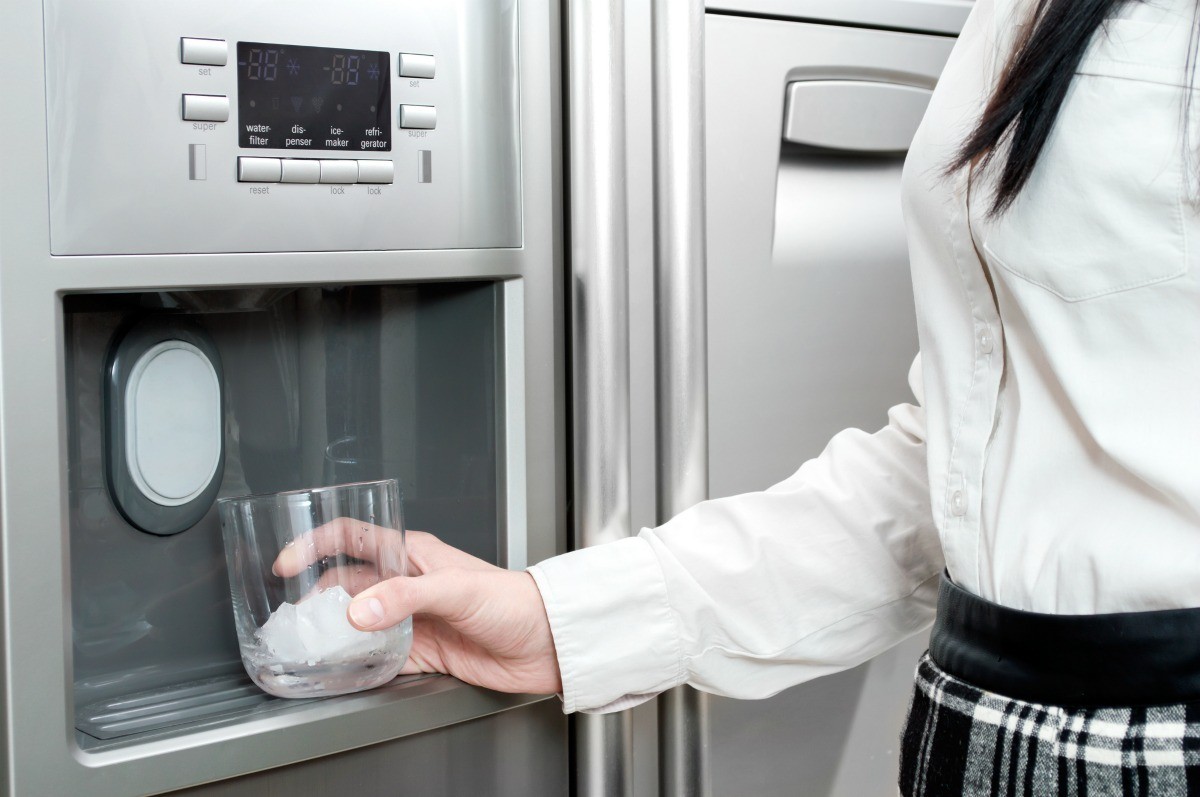
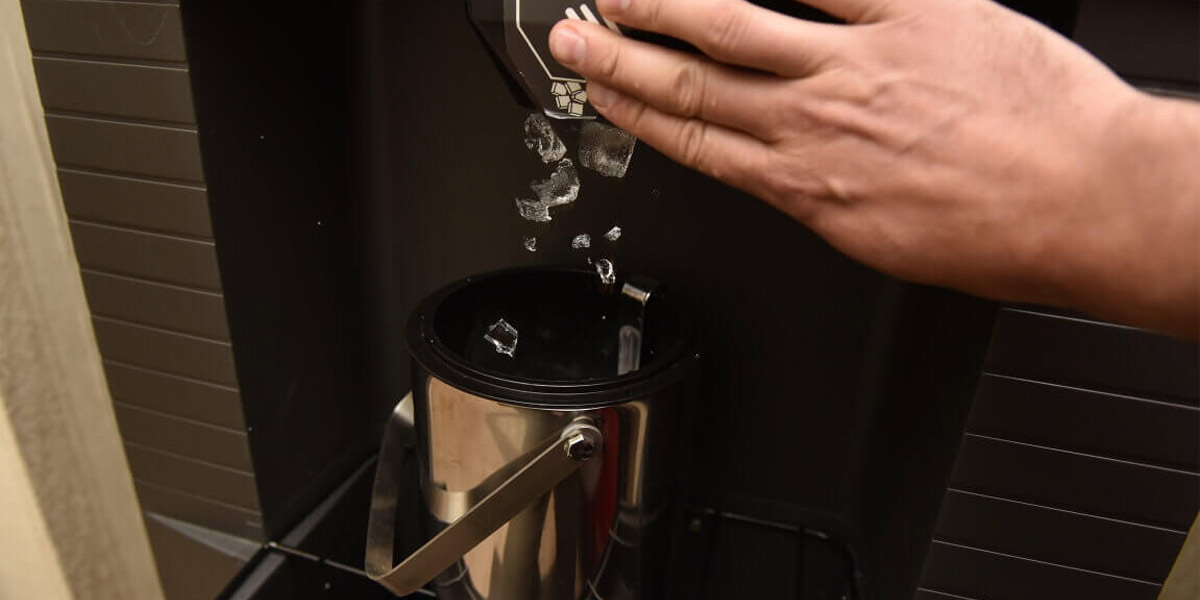
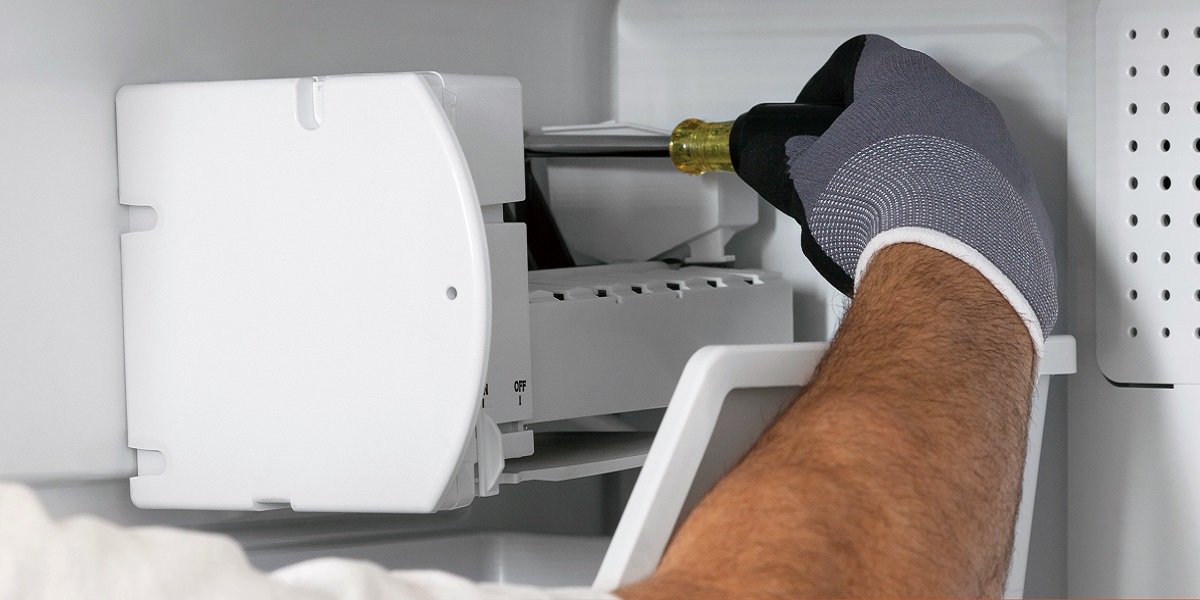
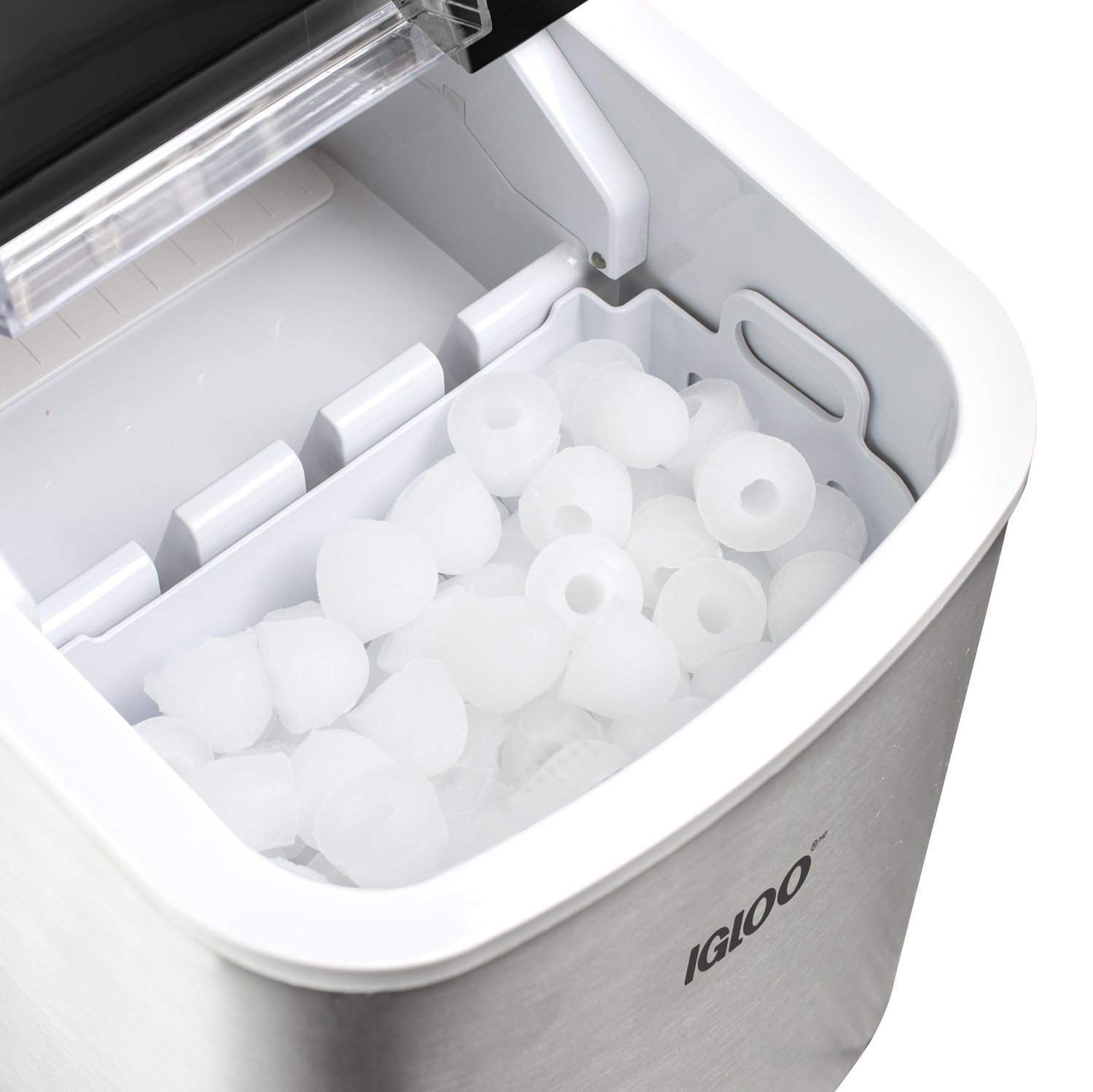
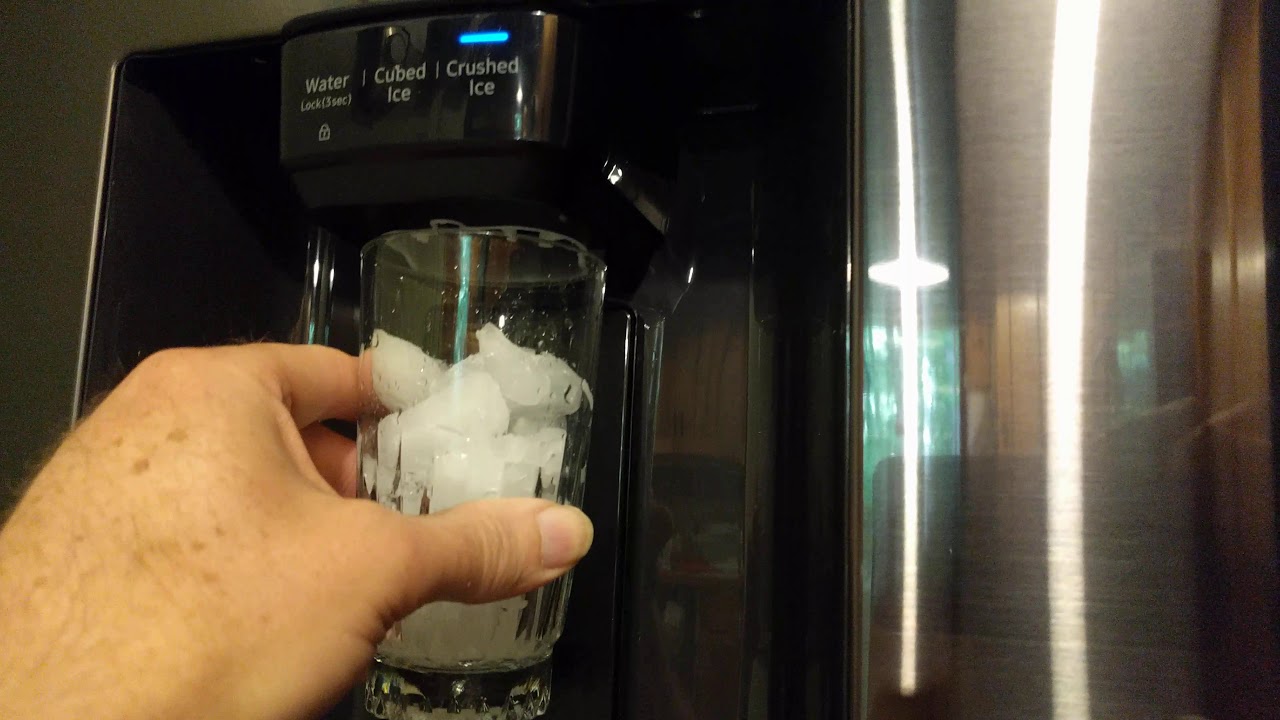
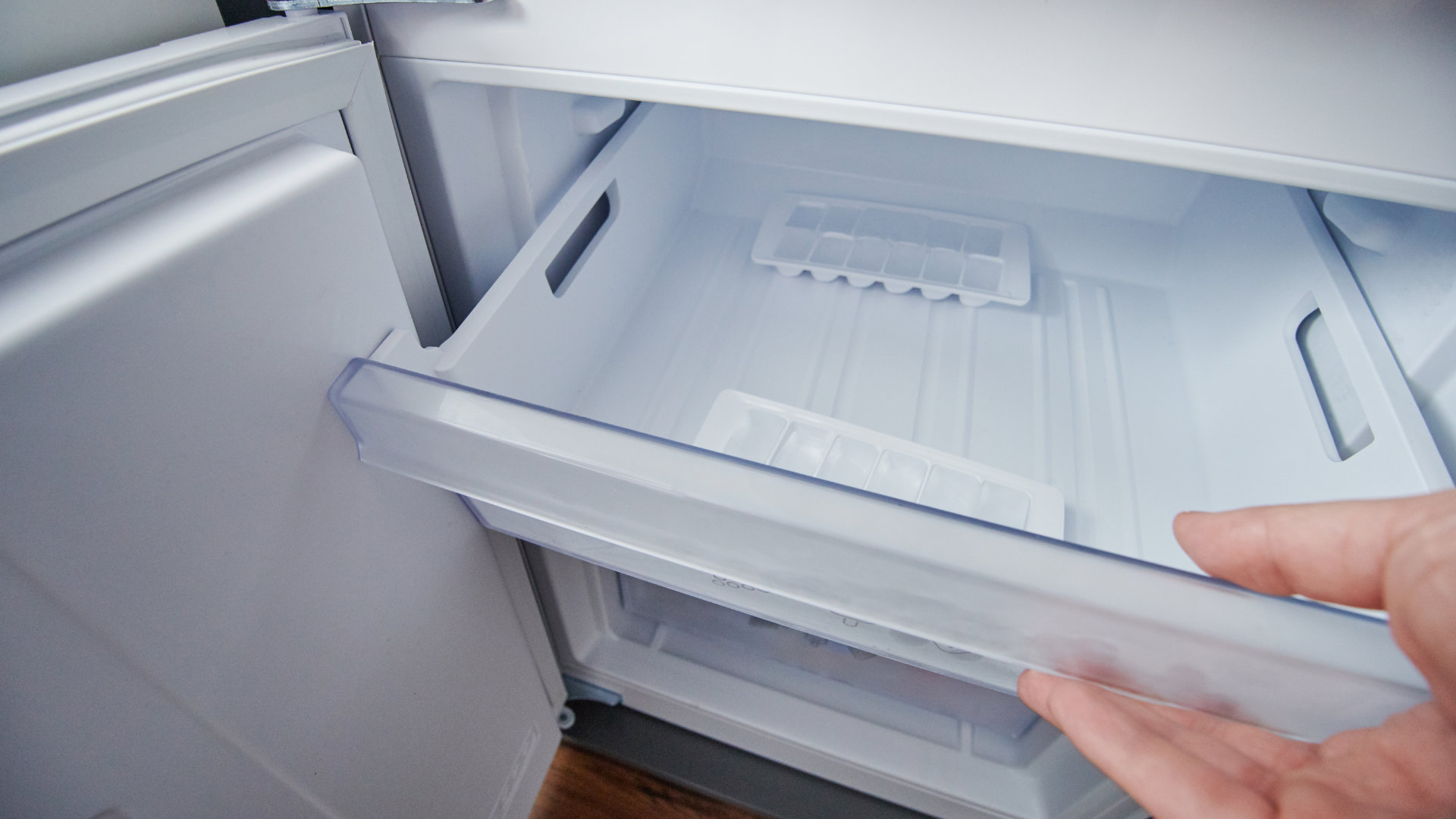
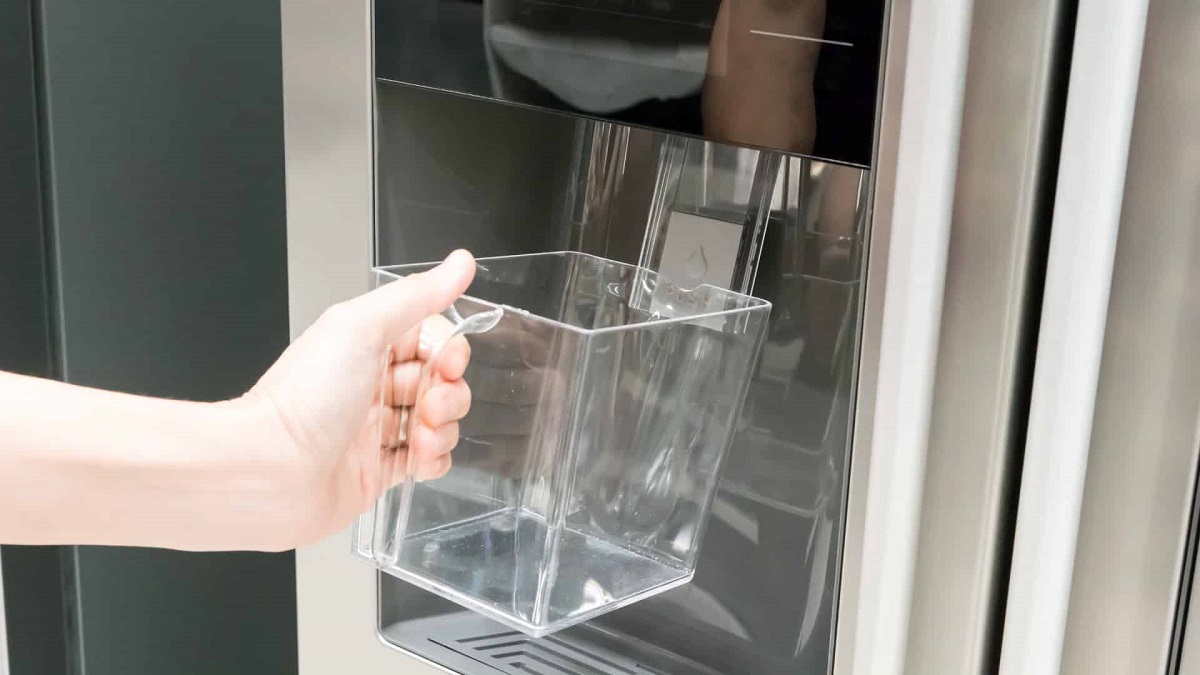
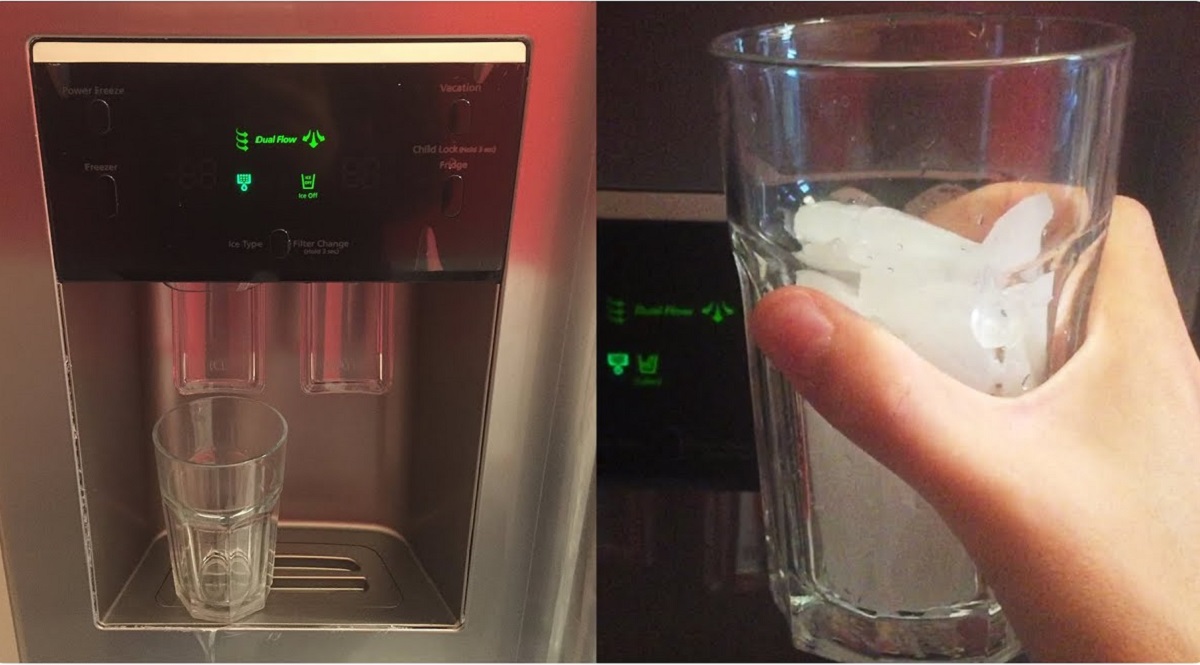

0 thoughts on “Why Is My Ice Maker Leaking Water Into The Fridge”